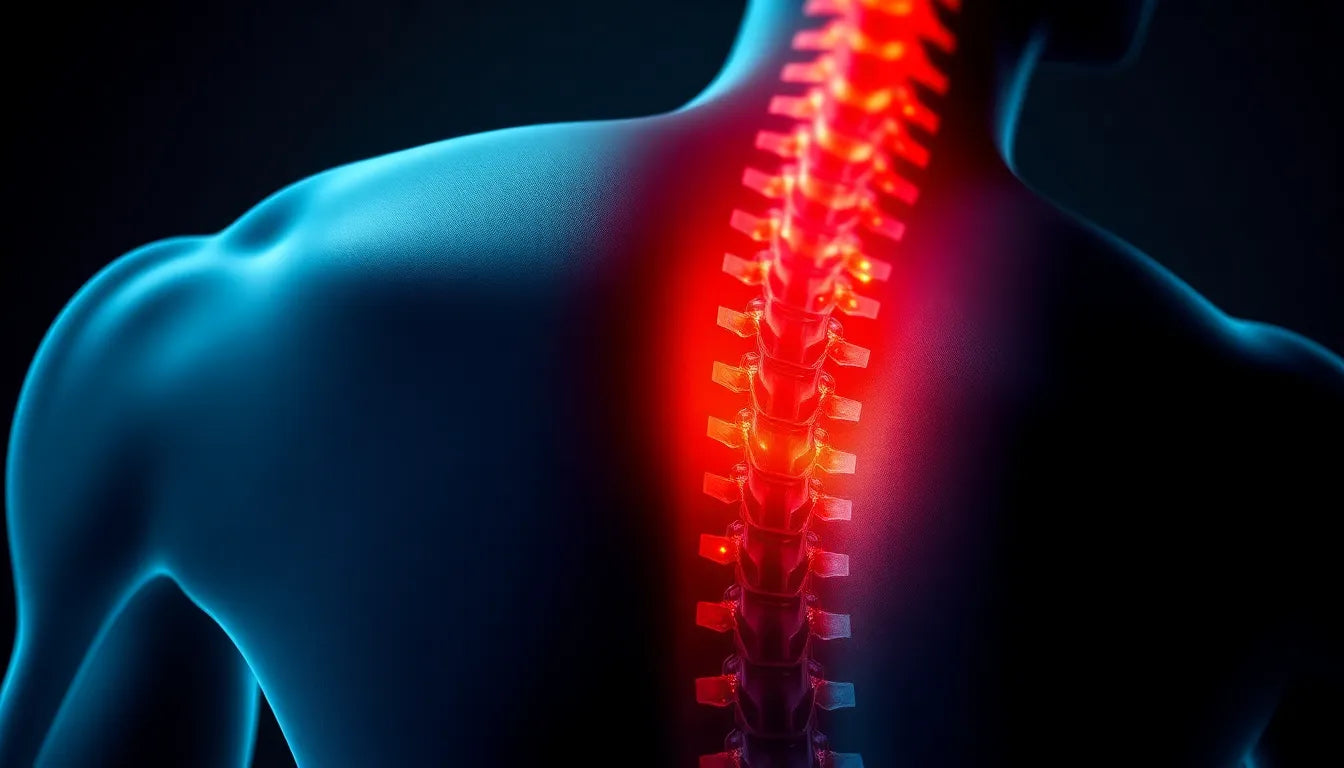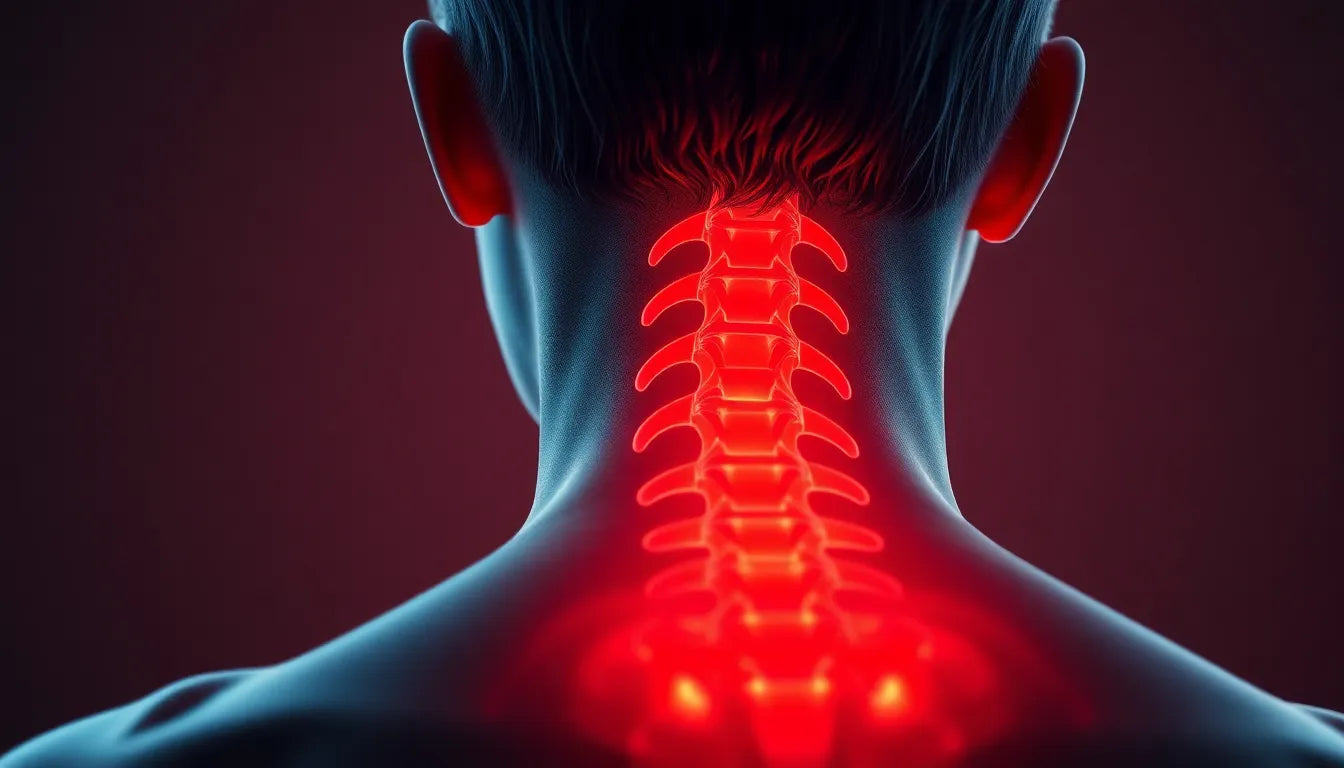Understanding how to treat a herniated disc is crucial for anyone experiencing the discomfort and disruption it can cause. A herniated disc occurs when the soft inner gel of a spinal disc pushes through a tear in its tougher exterior. This condition often arises from wear and tear over time, but it can also be triggered by sudden injury or strain. The result is a range of symptoms that can include back pain, numbness, and tingling sensations, often radiating down the arms or legs.
The symptoms of a herniated disc can vary in intensity, but they significantly impact daily life, making it difficult to perform routine activities. Left untreated, a herniated disc can lead to more severe complications, such as chronic pain or nerve damage. Therefore, seeking timely and effective treatment is essential not just for alleviating symptoms but also for preventing further health issues and improving overall quality of life.
The search for relief: overcoming treatment challenges
Finding effective treatment for a herniated disc can be challenging due to the wide array of options available and the varying responses individuals may have to different therapies. The journey to relief often involves navigating through conservative treatments, surgical interventions, and alternative therapies. Each approach offers its own benefits and limitations, and what works for one person may not be suitable for another.
The key to successful treatment lies in developing a personalized plan that addresses the specific needs and circumstances of the individual. This often involves a combination of methods, guided by professional medical advice, to ensure the best possible outcome. From non-invasive options like physical therapy and lifestyle modifications to surgical procedures for more severe cases, the goal is to tailor a treatment strategy that effectively manages symptoms and promotes recovery.
Ultimately, understanding the various treatment avenues and working closely with healthcare providers can empower individuals to make informed decisions about their care. By exploring the full spectrum of available treatments, those suffering from a herniated disc can find a path to relief that is both effective and sustainable.
Conservative treatments: the first step in herniated disc recovery
When it comes to treating a herniated disc, conservative treatments are often the first line of defense. These non-invasive methods focus on alleviating symptoms and promoting healing without the need for surgery. One of the foundational elements of conservative treatment is rest and activity modification. It's crucial to find the right balance between allowing your body to rest and engaging in gentle activities that promote spinal health. Overresting can lead to muscle weakness, while too much activity can exacerbate pain. Simple adjustments, such as avoiding heavy lifting and using proper body mechanics, can significantly reduce strain on the spine.
Physical therapy plays a pivotal role in conservative treatment, offering structured exercise programs that strengthen the muscles supporting the spine and improve flexibility. Common exercises include stretching routines, core strengthening, and low-impact aerobic exercises. These activities not only aid in recovery but also help prevent future injuries by enhancing overall spinal stability.
Pain management strategies for herniated disc relief
Pain management is another critical component of conservative treatment for herniated discs. Over-the-counter medications, such as nonsteroidal anti-inflammatory drugs (NSAIDs), are often recommended to reduce inflammation and alleviate pain. In some cases, prescription medications may be necessary for more severe pain. For individuals experiencing significant discomfort, epidural steroid injections can offer relief by directly targeting inflammation around the affected nerves. While these injections can be effective, it's important to consider potential risks and discuss them with a healthcare provider.
In addition to medication, lifestyle modifications can support pain management and overall recovery. Incorporating practices like yoga and Pilates can enhance flexibility and strengthen the core, providing additional support to the spine. Massage therapy is another beneficial option, as it can help reduce muscle tension and promote relaxation. Maintaining a healthy weight and practicing good posture are also essential in preventing strain on the spine and reducing the likelihood of recurrence.
Surgical options: when conservative treatments aren't enough
While many individuals find relief through conservative treatments, surgery may be necessary for those with severe symptoms or when non-invasive methods fail to provide sufficient relief. One of the most common surgical procedures for a herniated disc is microdiscectomy. This minimally invasive surgery involves removing the portion of the disc that is pressing on the nerve, which can alleviate pain and improve mobility. Recovery from a microdiscectomy is typically quicker than traditional surgery, with many patients experiencing significant improvement in symptoms.
For more complex cases, lumbar laminotomy or laminectomy may be recommended. These procedures involve removing part of the vertebra to relieve pressure on the spinal cord or nerves. While effective, they come with potential risks and a longer recovery period. Another advanced option is total disc replacement surgery, which involves replacing the damaged disc with an artificial one. This procedure aims to maintain normal spinal movement and is suitable for certain patients, depending on their specific condition and overall health.
Exploring alternative therapies for comprehensive care
In addition to traditional medical treatments, alternative therapies can play a valuable role in managing a herniated disc. Acupuncture, for instance, has gained popularity for its potential to relieve pain and promote healing. By stimulating specific points on the body, acupuncture can help reduce inflammation and improve circulation, offering a complementary approach to conventional treatments.
Chiropractic care and spinal manipulations are other alternative options that focus on aligning the spine and alleviating pressure on the nerves. These therapies should be approached with caution and performed by qualified practitioners to ensure safety and effectiveness. By integrating alternative therapies into a comprehensive treatment plan, individuals with herniated discs can enhance their recovery and achieve better overall outcomes.
Alternative therapies: expanding treatment horizons
Exploring alternative therapies offers additional avenues for those seeking relief from a herniated disc. Acupuncture, a practice rooted in traditional Chinese medicine, has been recognized for its potential benefits in pain management. By inserting fine needles at specific points on the body, acupuncture aims to stimulate nerves, muscles, and connective tissues, which can boost the body's natural painkillers and improve blood flow. This therapy can be seamlessly integrated into a broader treatment plan, complementing conventional medical approaches to enhance overall recovery.
Chiropractic care also presents a viable option for individuals with herniated discs. This treatment focuses on spinal adjustments to alleviate pressure on nerves and improve spinal alignment. Chiropractic care can be effective in reducing pain and restoring mobility. However, it is crucial to consult with a qualified practitioner to ensure safety and appropriateness, as not all cases of herniated discs may benefit from spinal manipulations.
Conclusion: crafting a personalized treatment strategy
In conclusion, finding relief from a herniated disc involves exploring a variety of treatment options, from conservative methods and surgical interventions to alternative therapies. Each approach offers unique benefits, and the effectiveness often depends on the individual’s specific condition and response to treatment. Consulting with healthcare professionals is essential to tailor a treatment plan that meets personal needs and promotes long-term recovery.
By understanding the available treatments and working closely with medical experts, individuals can make informed decisions that lead to effective management of their symptoms and an improved quality of life. Whether through physical therapy, surgical procedures, or alternative therapies, the path to relief is most successful when it is personalized and comprehensive.
Frequently Asked Questions
What are the symptoms of a herniated disc?
Common symptoms of a herniated disc include back pain, numbness, tingling, and weakness in the arms or legs. These symptoms can vary in intensity and may worsen with certain movements or activities. If you experience these symptoms, it is important to seek medical advice to prevent further complications.
How long does it take to recover from herniated disc surgery?
Recovery time from herniated disc surgery can vary depending on the type of surgery and the individual’s overall health. Generally, patients may return to normal activities within a few weeks to a few months. Factors such as age, physical condition, and adherence to rehabilitation protocols can influence recovery timelines.
Are there any long-term lifestyle changes I should consider?
To prevent future disc issues, consider maintaining a healthy weight, practicing good posture, and engaging in regular physical activity that strengthens the core and supports spinal health. Avoiding activities that put undue strain on the spine is also advisable.
Can ergonomic aids help in managing a herniated disc?
Yes, ergonomic aids such as supportive chairs, adjustable desks, and proper footwear can help manage a herniated disc by reducing strain on the spine during daily activities. These aids can promote better posture and comfort, contributing to overall recovery and well-being.


















